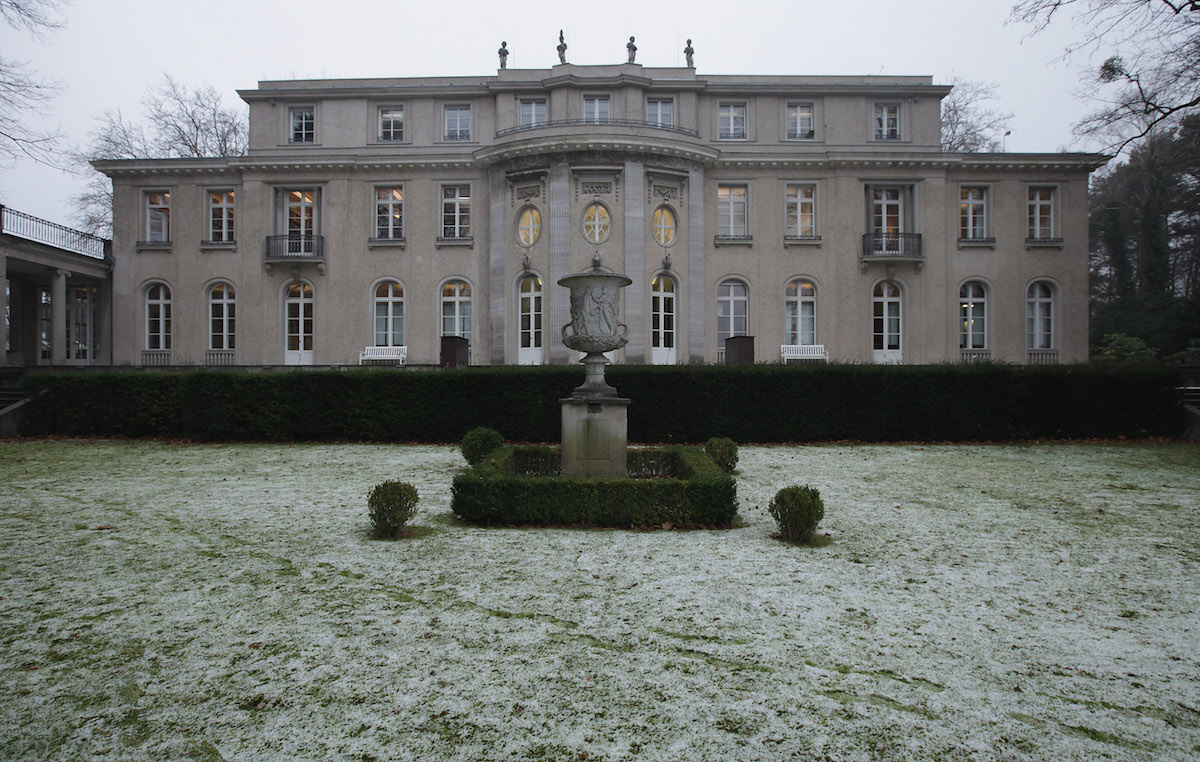
On Jan. 20, 1942—75 years ago this Friday—top-ranking Nazi party, SS and government officials gathered in a tiny Berlin suburb to discuss the so-called “Final Solution” to the “Jewish Problem” in Germany and wider Europe. The Wannsee Conference was held at the guesthouse of the Security Police in the Villa Minoux. It lasted only an hour – and yet, in the minds of the technocrats who attended this infamous meeting, decided the fate of over 11 million European Jews. As such, the Wannsee Conference is sometimes credited as the beginning of the planning and implementation of the “Final Solution” for genocide.
The coded language of the secret conference never explicitly mentioned the complete destruction of an entire people, but conversed about this policy in the language of bureaucracy. That decision, as has been pointed out by communications expert Marshall Rosenberg, served to create a situation in which committing genocide seemed like standard policy, rather than a choice made by any individual. But, while the surviving minutes of the meeting were heavily edited, they still hint at the destruction of the Jewish people on the European continent.
The conference did hold significant importance; it provided a centralized plan of action to rid the continent of its Jewish population and crystalized that plan in Nazi government policy. Several ideas were suggested beforehand – mass deportations (including to the island of Madagascar), mass sterilization and other gruesome ideas. The “Final Solution” was to send Jewish people to ghettos and camps in Poland, and subsequently exterminate them. The Wannsee Conference served as an opportunity for the Nazi regime to coordinate that process across various departments and divisions, military or otherwise.
But, despite the fact that the Wannsee Conference cemented a bureaucratic policy of mass murder, it was by no means the beginning of Nazi Germany’s genocidal campaign against Jewish people. The decision to exterminate the population had already been made months, perhaps even years, before the meeting. According to historians such as Christopher Browning, the process of arriving at the “Final Solution,” was slow and gradual, but genocide was always implied. Preparations were well under way, and killings already taking place. The Wannsee Conference merely served the function of consolidating and streamlining the entire process.
Get your history fix in one place: sign up for the weekly TIME History newsletter
Entire extermination camps were already under construction, including Belzec, one of the most infamous killing centers of the war. Even prior to the outbreak of war, a policy of persecution of Jews and other “non-desirables” existed in Nazi-controlled Germany. Many historians consider Kristallnacht (the Night of the Broken Glass, Nov. 9, 1938), to be the start of the Holocaust. However, even prior to this pogrom, state-sponsored racial and religious isolation sought to eliminate Jews from German society. The Nuremberg Laws were one of the most obvious examples of this state-sponsored racism. Introduced in 1935, these anti-Semitic policies forbade relationships between Jews and Germans, denied Jews the right to citizenship and established racial categories in order to disenfranchise Jews and deprive them of political and civic rights.
Extreme violence against and even the murder of Jews was becoming commonplace by the eve of the war. The situation escalated rapidly after the invasion of Poland by German forces in 1939. Ghettos were established in German-occupied Poland, with various groups of Jews from all occupied territory being sent to these locations. Einsatzgruppen (special task forces) along with other mobile killing squads, murdered civilians as part of the push eastwards. By the summer of 1941, mass killings were continuous and ongoing. For example, mobile “gas vans,” which killed people en masse with exhaust fumes, were already in use. Perhaps one of the most interesting aspects of the Einsatzgruppen is that they were often made up of “ordinary men,” who were either too old to serve as army regulars or could not for various other reasons. These men were not seasoned Nazi political hardliners, but blue-collar Germans, who engaged in murder because of psychological and social conditioning. As the Nazi war machine rolled eastwards, the infrastructure of death was already beginning to be constructed. Railroads leading infamous death camps such as Auschwitz were built, and ghettos prepared and populated.
With 1942 approaching, Hermann Göring, a top ranked Nazi official, who would later be the highest-ranked Nazi leader to be tried at Nuremberg, gave the orders to Reinhard Heydrich, the so-called main architect of the Holocaust: A plan was to be devised to account for the total solution of the Jewish question. That plan was crafted at Wannsee.
By this then, however, the meeting was nothing more than a technicality. The framework of genocide was already in place, and the conference served as a way to centralize the mechanism and “ensure the smooth flow of deportations.”
By the end of the war in 1945, an estimated six million Jews—and millions of other victims such as Romanis, Freemasons, physically disabled people, Slavs, communists, homosexuals and others—lay dead in the wake of the genocide. Though the Wannsee Conference was an important moment in that deadly process, it was not the beginning.
More Must-Reads from TIME
- Cybersecurity Experts Are Sounding the Alarm on DOGE
- Meet the 2025 Women of the Year
- The Harsh Truth About Disability Inclusion
- Why Do More Young Adults Have Cancer?
- Colman Domingo Leads With Radical Love
- How to Get Better at Doing Things Alone
- Michelle Zauner Stares Down the Darkness
Contact us at letters@time.com